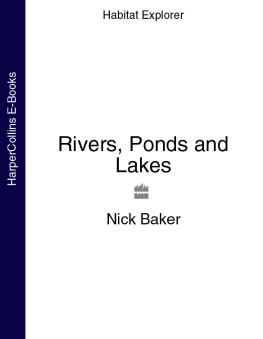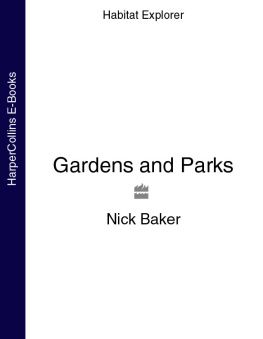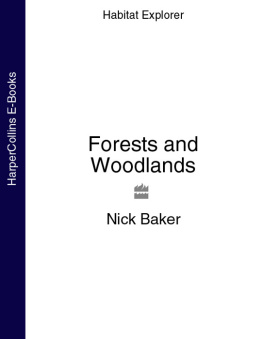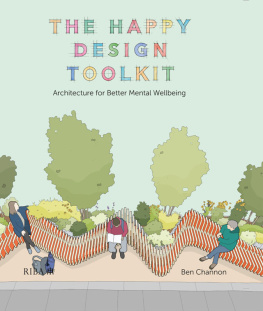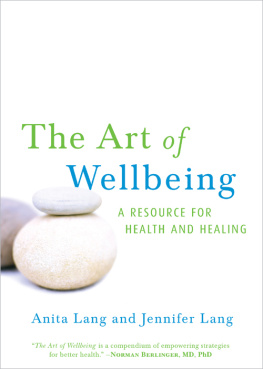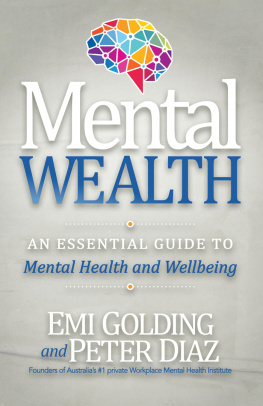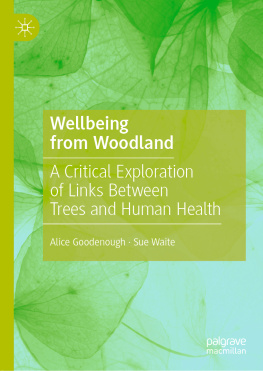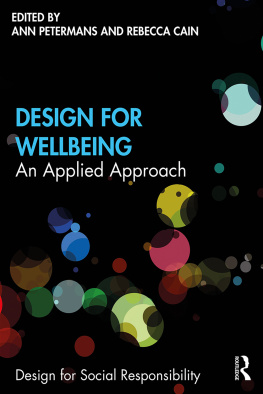We would like to thank The VELUX Group Knowledge Centre for Daylight, Energy and Indoor Climate for organising a series of expert workshops and report that provided the early stimulus for this book. We are grateful for their support and advice, and for access to their photographic library. We would also like to thank the Martin Centre for Architectural and Urban Studies, Department of Architecture, University of Cambridge, for financial support.
We thank Ben Channon architect, writer and illustrator for his engaging illustrations and the trouble he has taken to faithfully convey the technical sense of our hastily scribbled drafts.
Particular gratitude goes to Ginny Mills commissioning editor of RIBA Publishing for her expert advice and patient guidance during the preparation of this book.
Finally, in relation to the Care Home scenario in , we would like to thank Michael Parmenter for helpful discussions, and allowing the author access to the care home that he manages.
Unless otherwise stated, all URLs accessed April 2019
Prelims
Chapter 2 is based in part on the following paper and re-appropriated here with the kind permission of the journal: Steemers, K. (2015). Architecture for well-being and health, Daylight & Architecture, Spring 2015, Issue 23, 6-27.
Chapter 1
The WHO definition of health is in its constitution, which was adopted when it was founded in 1948.
World Health Organization (WHO) (2018). WHO Housing and health guidelines . World Health Organization: Geneva.
Marchant, J. (2016). Cure: A journey into the science of mind over body. Canongate: Edinburgh.
Vitruvius, P., and Morgan, M.H. (1960). V itruvius: The ten books on architecture. (M. Morgan, trans.) Dover Publications: New York [Original work published 1914], p 10.
Marchant, op. cit .
Ibid. , p 294.
Heathcote, E. (2006). British Medical Journal , 333: 1304-1305.
Adams, A. (1996), Architecture in the Family Way: Doctors, Houses, and Women, 1870-1900. McGill-Queens University Press: Montreal.
Ibid. , p 37.
Ibid. , p 39.
Campbell, M. (2005). What Tuberculosis did for Modernism: The Influence of a Curative Environment on Modernist Design and Architecture, Medical History 49(4), pp 46388.
Pettenkofer, M. (1858). ber den Luftwechsel in Wohngebauden . Der J.G. Cottaschen Buchhandlung: Munich.
Nightingale, Florence (1974) [First published 1859]. Notes on Nursing: What it is and what it is not . Blackie & Son Ltd: Glasgow and London.
Howard, E. (1989). To-morrow: A Peaceful Path to Real Reform . Swan Sonnenshein & Co.: London (subsequently published as Garden Cities of To-morrow , 1902).
Campbell, op. cit ., pp 474-475.
Campbell, op. cit .
Brainard, G.C., Hanifin, J.R., Greeson, J.M., Byrne, B., Glickman, G., Gerner, E. and Rollag, M.D. (2001). Action spectrum for melatonin regulation in humans: evidence for a novel circadian photoreceptor, Journal of Neuroscience , 21, pp 640512.
Foster, R.G., Provencio, I., Hudson, D., Fiske, S., De Grip, W. and Menaker, M. (1991). Circadian photoreception in the retinally degenerate mouse (rd/rd), Journal of Comparative Physiology A , 169(1), pp 3950.
Provencio, I., Rodriguez, I.R., Jiang, G., Hayes W.P., Moreira, E.F. and Rollag, M.D. (2000). A Novel Human Opsin in the Inner Retina, Journal of Neuroscience , 20 (2), pp 6005.
Evans, J.A. and Davidson, A.J. (2013). Health Consequences of Circadian Disruption in Humans and Animal Models, Progress in Molecular Biology and Translational Science , 119, pp 283323.
Amundadottir, M.L., Rockcastle, S., Khanie, M.S. and Andersen, M. (2017). A human-centric approach to assess daylight in buildings for non-visual health potential, visual interest and gaze behavior, Building and Environment , 113, pp 521.
Velux (2017), op. cit .
UKGBC (July 2016). Health and Wellbeing in Homes . UK Green Building Council: London.
Lafond, S., Charlesworth, A. and Roberts, A. (2016). A perfect storm: an impossible climate for NHS providers finances? An analysis of NHS finances and factors associated with financial performance . London: Health Foundation.
Murray, R., Jabbal, J., Thompson, J., Baird, B., Maguire, D. and Northern, E. (2016). Quarterly monitoring report . The Kings Fund: London.
Marmot, M.G., Allen, J., Goldblatt, P., Boyce, T., McNeish, D., Grady, M. and Geddes, I. (2010). Fair society, healthy lives: Strategic review of health inequalities in England post-2010 . The Marmot Review: London, p 18.
Velux (2016), op. cit. , p 13
Robertson, R., Wenzel, L., Thompson, J. and Charles, A. (2017). Understanding NHS financial pressures . The Kings Fund: London.
Marmot, et al., op. cit .
Ibid. , p 34.
Ibid. , pp 7980.
UKGBC, op. cit .
Thaler, R. and Sunstein, C. (2008). Nudge: Improving decisions about health, wealth and happiness . Yale University Press: New Haven, CT.
King, D., Thompson, P. and Darzi, A. (2014). Enhancing health and wellbeing though behavioural design, Journal of the Royal Society of Medicine , pp 3367.
Chapter 2
Vitruvius and Morgan, op. cit .
ISO (2005). 7730:2005 - Ergonomics of the thermal environment . International Organization for Standardization: Geneva.
Bluyssen, P. (2013). The Healthy Indoor Environment . Routledge: Abingdon.
Fanger, P. (1970). Thermal comfort: Analysis and applications in environmental engineering. Danish Technical Press: Copenhagen.
Adaptive-comfort theory suggests that a human connection to the outdoors and control over the immediate environment allows building users to adapt to and possibly even prefer a wider range of thermal conditions than is generally considered comfortable.
- de Dear, R. and Brager, G. (1998). Towards an adaptive model of thermal comfort and preference, ASHREA Transactions , pp 14567.
- Nicol, J. and Humphreys, M. (2002). Adaptive thermal comfort and sustainable thermal standards for buildings, Energy and Buildings , pp 56372.
- Baker, N. and Standeven, M. (1996). Thermal comfort for free-running buildings, Energy and Buildings , pp 17582.
Huppert, F. and So, T. (2013). Flourishing across Europe: Application of a new conceptual framework for defining well-being, Social Indicators Research , pp 83761.
- Anderson, J. (2014). Urban design and well-being, doctoral thesis, University of Cambridge.
- Aked, J., Michaelson, J. and Steuer, N. (2010). Good foundations: Towards a low carbon, high well-being built environment . New Economics Foundation: London.
Roberts-Hughes, R. (2013). City Health Check: How design can save lives and money . RIBA Publishing: London.
CABE (2009). Sustainable places for health and Well-being. Commission for Architecture and the Built Environment: London.
NICE (2008). Promoting and creating built or natural environements that encourage and support physical acivity. National Institute for Health and Clinical Excellence.: London.
Dalgard, O. and Tambs, K. (1997). Urban environment and mental health: A longitudinal study, British Journal of Psychiatry , pp 5306.
Evans, G. (2003). The Built Environment and Mental Health, Journal of Urban Health , pp 53655.
Foresight (2008). Mental capital and well-being . The Government Office for Science: London.
Large-scale here denotes large sample sizes in number and/or over time; meta-studies refers to studies of studies i.e. the compiling of multiple studies in order to look for consistent trends and findings.
- Foresight, op. cit . - Dolan, P., Peasgood, T. and White, M. (2008). A review of the economic literature on the factors associated with subjective well-being, Journal of Economic Psychology , pp 94122.



